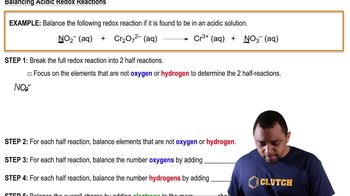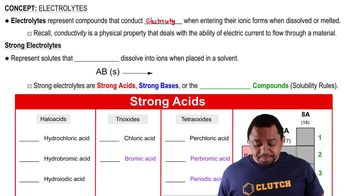Here are the essential concepts you must grasp in order to answer the question correctly.
Electrolysis
Electrolysis is a chemical process that uses electrical energy to drive a non-spontaneous reaction. In this process, an electric current is passed through an electrolyte, causing the decomposition of the compound into its constituent elements. The reactions occur at two electrodes: the anode (positive electrode) and the cathode (negative electrode), where oxidation and reduction reactions take place, respectively.
Recommended video:
Half-Reactions
Half-reactions are the individual oxidation or reduction reactions that occur at the electrodes during electrolysis. Each half-reaction shows the transfer of electrons and the change in oxidation states of the species involved. By writing half-reactions, one can clearly identify what is being oxidized at the anode and what is being reduced at the cathode, which is essential for understanding the overall electrochemical process.
Recommended video:
Redox Half Reactions Example
Electrolyte Solutions
Electrolyte solutions are aqueous solutions that contain ions, which are necessary for conducting electricity. The nature of the electrolyte affects the products formed during electrolysis. For example, in KCl(aq), chloride ions can be oxidized at the anode, while in CuBr2(aq), copper ions can be reduced at the cathode, leading to different half-reactions based on the specific ions present in the solution.
Recommended video:
Electrolytes and Strong Acids

 Verified step by step guidance
Verified step by step guidance


